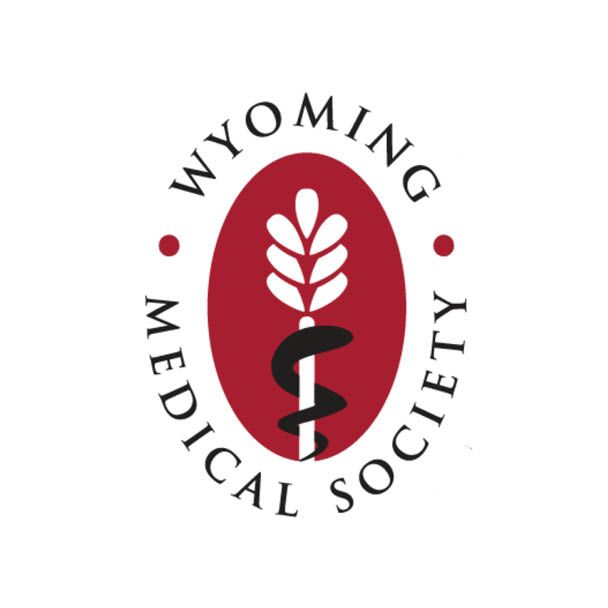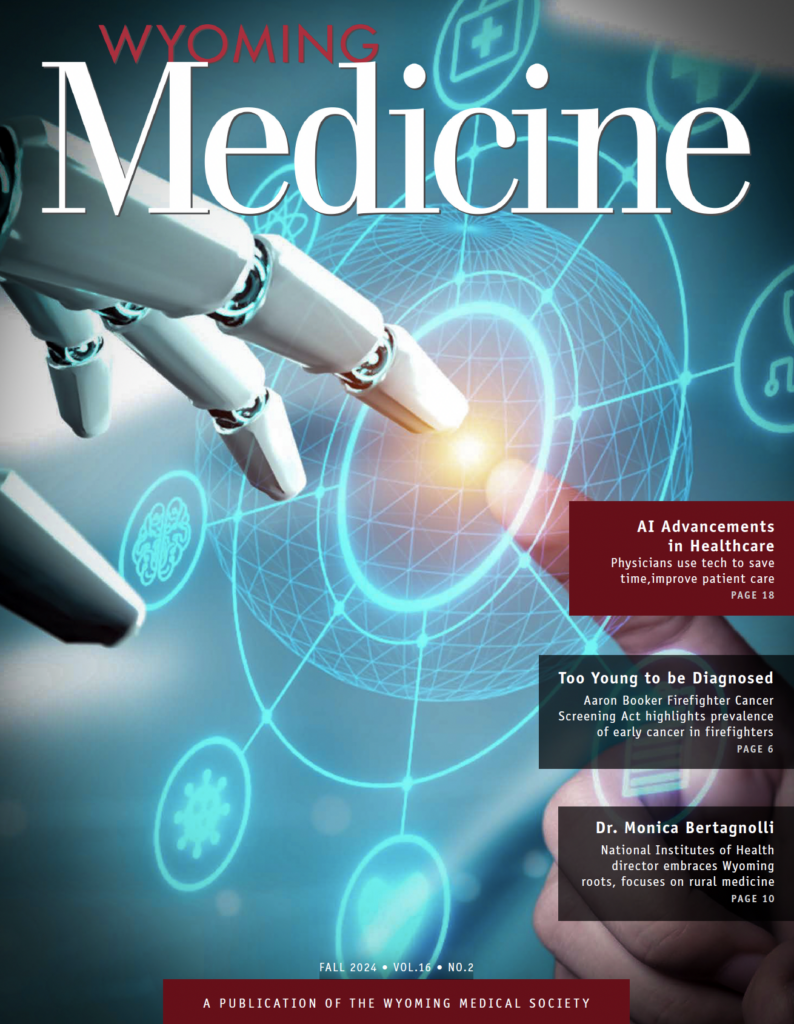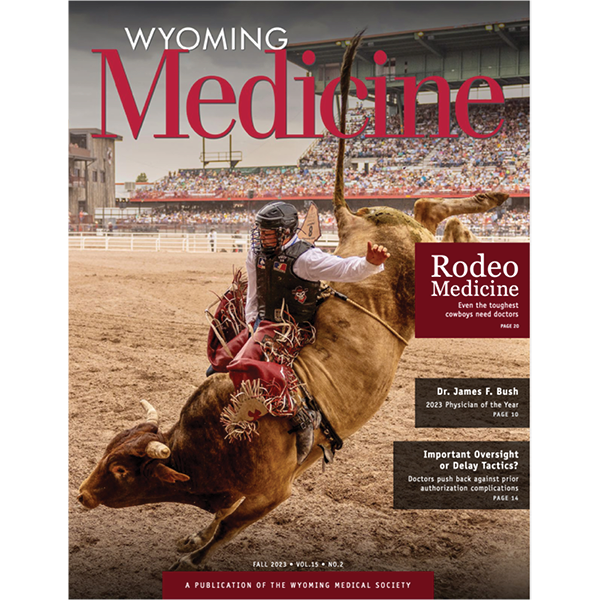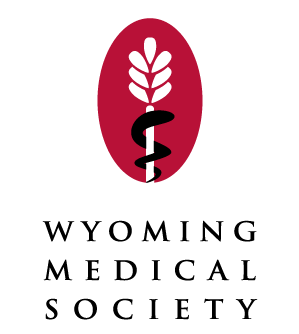
THE SHIELD BECOMES A SWORD - WYOMING’S CONSTITUTIONAL RIGHT TO MAKE HEALTHCARE DECISIONS
The Shield Becomes a Sword - Wyoming’s constitutional right to make healthcare decisions
Originally published in Wyoming Medicine Spring 2023
In 2010, a debate about the proper role of government in invalidate the “trigger ban” on abortion; in 2023, against the healthcare roiled the country, as Democrats sought to pass the Patient Protection and Affordable Care Act–popularly known as the ACA or Obamacare–federal legislation they claimed would provide greater access to healthcare. Federal and state-level Republicans claimed the ACA would limit patient choice in both healthcare services and in how to payfor those services. The ACA passed, and several years later, in 2012, Wyoming’s Republican-led Legislature proposed a constitutional amendment to shield its citizens’ ability to make their own healthcare decisions, subject to reasonable restrictions, which Wyoming’s voters approved–Article I,section 38 of the Wyoming Constitution.
In 2023, Wyoming’s Republican-led Legislature finds section 38 used as a sword against its efforts to restrict Wyoming’s citizens’ ability to make certain healthcare decisions, such as within the realms of abortion and gender- affirming medical care. In 2022, the U.S. Supreme Court (or SCOTUS) set the stage for this debate by ruling in Dobbs v. Jackson Women’s Health Organization, that the U.S. Constitution did not guarantee the right to abortion, and in the process overturned 49 years of precedent that began with Roe v. Wade in 1973. In the process, the SCOTUS gaveindividual states the right to regulate abortion.
Opponents of the Legislature’s efforts have sued in the Wyoming District Court for Teton County: in 2022, to Life is a Human Right Act (the “Life Act”), claiming these are illegal restrictions on their rights under section 38. Whether the Life Act, and similar laws, survive those challenges will ultimately turn on what the Wyoming Supreme Court finds that section 38 really means.
The genesis of section 38: The healthcare decisions amendment
Article I, § 38 of the Wyoming Constitution was passed by the Wyoming Legislature in 2011, and approved overwhelmingly in 2012 by Wyoming’s citizens. Section 38 states, in its entirety:
a. Each competent adult shall have the right to make his or her own healthcare decisions. The parent, guardian or legal representative of any other natural person shall have the right to make healthcare decisions for that person.
b. Any person may pay, and a healthcare provider may accept, direct payment for healthcare without imposition of penalties or fines for doing so.
c. The legislature may determine reasonable and necessary restrictions on the rights granted under this section to protect the health and general welfare of the people or to accomplish the other purposes set forth in the Wyoming Constitution.
d. The State of Wyoming shall act to preserve these rights from undue governmental infringement.
Section 38 does not explicitly mention the ACA, but there is little doubt it was intended as a direct response.1 In fact, Wyoming’s response to the ACA was not unique– between 2010 and 2015, 22 state legislatures enacted measures relating to challenging or opting out of the ACA, and five states–Alabama, Arizona, Ohio, Oklahoma, and Wyoming–amended their constitutions to prevent or inhibit the application of the ACA. All of these state constitutional amendments, like Wyoming’s, explicitly guaranteed the right not to be compelled to participate in a healthcare system. However, Wyoming went further, guaranteeing the right of every competent adult to make their own healthcare decisions.2 In fact, the Wyoming Legislature strengthened this protection by stating that the State itself was required to protect this right from “undue governmental infringement.”SCOTUS has given the term “infringement” particular significance in the Second Amendment context, essentially holding that it means the Second Amendment protects a right that pre-existed the federal Constitution.3 In Second Amendment cases, SCOTUS has held that the burden is on the government to show that the governmental infringement is justified, and will grant “substantial deference” to protecting the preexisting right. The Wyoming Supreme Court has likewise held that, where fundamental rights are involved, the government bears the burden of proof, not thechallenger.4 Therefore, the Wyoming Legislature seems to have set itself a high bar in seeking to constrain Wyoming citizens’ rights to make healthcare decisions–the State has the burden of showing that a restriction is justified. That may, given the circumstances, be an uphill battle.
When passed, section 38 seems to have been a specific response to two aspects of the ACA. Section 38: (a) addressed the belief that the ACA would restrict a patient’s rights to choose their own physician and course of care (including so- called “death panels”, which would supposedly deny care toolder or disabled patients in the name of cost containment)5 and (b), addressed the concern that Wyomingites would be compelled to participate in a single-payer healthcare system. The Wyoming Attorney General argued in Johnson I that section 38 was only intended as a “message” amendment, “expressing the state's displeasure with the controversial federal Affordable Care Act.”6 That may be true–however, the way the Wyoming Legislature and voting public chose to express that displeasure seems to have been by guaranteeing the right to make healthcare decisions.
Wyoming courts are already grappling with these issues
Fast-forwarding just 10 years since the passage of section 38; Wyoming’s “abortion trigger ban,” Wyo. Stat. § 35-6-102, went into effect soon after the ink was dry on the SCOTUS’ Dobbs decision. The “trigger ban” prohibited abortion except in very limited circumstances:
- When necessary to preserve the woman from a serious risk of death or of substantial and irreversible physical impairment of a major bodily function, not including any psychological or emotional conditions;
- the pregnancy is the result of incest; or
- sexual assault.
Almost immediately after the “trigger ban” went into effect, in 2022, several individuals and organizations filed suit in state court in Jackson, seeking to prevent the State (and county and town law enforcement) from enforcing the “trigger ban” (Johnson v. State of Wyoming, or “Johnson I”), claiming that the “trigger ban” violated section 38’s guarantee of the right to make healthcare decisions. Judge Owens temporarily granted the plaintiff’s requested injunction against enforcement of the “trigger ban,” finding a substantial likelihood that the “trigger ban” was unconstitutional. Judge Owens then certified the question to the Wyoming Supreme Court for a final decision. The Wyoming Supreme Court, however, refused to decide the question at that time, sending the case back to Judge Owens for further development of the facts. Johnson I has been overtaken by events on the ground, as the Wyoming Legislature passed the Life Act in 2023, seeking to further refine the abortion ban, and remove some of the grounds on which the “trigger ban” had been challenged. Immediately after the Life Act became effective, the plaintiffs in Johnson I filed a new lawsuit before Judge Owens (Johnson II), claiming that the Life Act also violated the section 38’s guarantee of the right to make healthcare decisions.7
Section 38’s inherent tension; the right to make healthcare decisions vs. “reasonable restrictions”
Section 38 contains an inherent tension–on the one hand, subsection (b) guarantees the right to make healthcare decisions (which subsection (d) says must be protected from “undue governmental infringement”)8, and on the other, subsection (c) permits the State to restrict that right. It is almost inevitable that a court would be called on to resolve that tension, which would require the court to answer several questions:
- Is the treatment (such as gender-affirming care) or procedure (such as surgical abortion) “healthcare,” so that the decision to undergo that treatment or procedure is a “healthcare decision”?
- If the State has restricted an individual’s right to receive the treatment or procedure, is that restriction both “reasonable” and “necessary,” and specifically, both reasonable and necessary “to protect the health and general welfare of the people” or “to accomplish the other purposes set forth in the Wyoming Constitution”?
The Wyoming Legislature attempted an end-run around the first question, by making a Legislative finding in the Life Act that abortion is not healthcare. This attempt is unlikely to be successful–under the Constitution’s “separation of powers” principle, interpreting the laws (including the constitution), it is the exclusive job of the courts, not the legislature (as both Judge Owens and Governor Gordon have pointed out). While the Wyoming Supreme Court has acknowledged that it must give “great deference” to Legislative pronouncements, it has also acknowledged that the Court has an “equally imperative duty to declare a legislative enactment invalid if it transgresses the state constitution ... We must look behind the name to the thing named.”9 Therefore, the Legislature’s declaration does not bind Wyoming’s courts, and this issue will have to be addressed.
The Wyoming Supreme Court will instead look to the “plain language” of section 38 itself, following the time-honored rule that “[i]n cases of constitutional interpretation, a court is guided primarily by the intent of the drafters; in determining that intent, the court looks first to the plain and unambiguous language used in the text of the Constitution.”10 Further, “[i] n cases of constitutional interpretation, courts are not at liberty to depart from a meaning that is plainly declared.”11 But if a court determines that the language of section 38 is ambiguous, then a court may consider the legislative history of section 38;12 along with the historical context in which section 38 was passed.
Abortion and gender-affirming care under section 38
Section 38 does not define “healthcare decision,” giving few textual clues as to the intent of the drafters. However, as described above, the intent of section 38 appears to have been, at least in part, a direct response to fears that the ACA would limit patient choice, indicating that laws doing the same thing, i.e. limiting patient choice, are specifically within its scope of protection. While the Wyoming Attorney General has argued in Johnson I and II that the proper question is whether the Wyoming Constitution guarantees the right to abortion, the proper question is more likely whether abortion is a healthcare decision. The Legislature itself has spoken to the “plain meaning” of the term “healthcare decision” in the 2005 Wyoming Healthcare Decisions Act , defining it as:
[A] decision made by an individual or the individual's agent, guardian, or surrogate, regarding the individual's healthcare, including:
(A) Selection and discharge of healthcare providers and institutions;
(B) Approval or disapproval of diagnostic tests, surgical procedures, programs of medication and orders not to resuscitate; and (C) Directions to provide, withhold or withdraw artificial nutrition and hydration and all other forms of healthcare.13
“Healthcare,” in turn, is defined as “any care, treatment, service or procedure to maintain, diagnose or otherwise affect an individual’s physical or mental condition.”14
Using these definitions to interpret section 38, the Wyoming Supreme Court could find that both the decision to terminate a pregnancy, and to receive gender-affirming care, are “healthcare decisions” protected by Article 1, section 38. Pregnancy is a physical condition, and which is clearly affected by termination (usually through a “surgical procedure” or “programs of medication”). Likewise, gender dysphoria is a recognized “mental condition” (in the DSM-5), which either “programs of medication” or a “surgical procedure” can treat. Using the definitions the Legislature has already created, the Wyoming Supreme Court could easily find that both the decision to terminate a pregnancy, and to receive gender-affirming care, are “healthcare decisions,” protected by section 38.
The question then becomes whether Wyoming’s restrictions on abortion, and proposed restrictions on gender-affirming care, are “reasonable and necessary restrictions to protect the health and general welfare of the people.” It’s unclear how a Wyoming court would judge the reasonableness or necessity of restrictions on section 38’s right to make healthcare decisions. Generally, restrictions on constitutional rights are reviewed by courts under a “strict scrutiny,” “intermediate scrutiny,” or “rational basis” standard. Strict scrutiny is generally applied to governmental restrictions on fundamental rights; it is the highest bar a governmental restriction must overcome, and such restrictions will only be upheld if they serve a compelling state interest, and are narrowly tailored to serve that compelling interest. Judge Owens in Johnson II found that section 38 protected a fundamental right when she granted a temporary restraining order (TRO) against enforcement of the Life Act, stating that:
Wyomingites voted into law that they have a fundamental right to make their own healthcare decisions, and, by doing so, they also agreed that the state can put reasonable and necessary restrictions on that, as long as there is no undue government infringement. The Legislature declaring that abortion is not healthcare takes away from the duty of this court to decide constitutional questions of law, and that violates the separation of powers.15
At the trial court level, at least, it appears that the State of Wyoming will have to identify a compelling state interest that the Life Act was narrowly tailored to protect. That phase of Johnson II has not yet begun, but will be a heavily fact- intensive inquiry, and is unlikely to be over soon. Again,the Legislature appears in the Life Act to have pointed to its interest in protecting life, which it contends begins at conception, as the interest it seeks to protect. However, it remains to be seen whether Wyoming courts are willing to accept the Legislature’s contention. Likewise, the State of Wyoming will have to explain why the Life Act is “necessary” to protect life, when it has already passed statutes that resolve conflicts between a child’s right to life and a parent’s right to the free exercise of religion (another fundamental right) against the child. Wyoming law (Wyo. Stat. 14-3-202(a)(vii)) excepts from the definition of “neglect” of a child's treatment of medical conditions solely with prayer, presumably even if it results in the child’s death. These difficult questions will likely be part of Judge Owens’ (and the Wyoming Supreme Court’s) decision-making process as Johnson II progresses.
Conclusion
Section 38 was a direct response by the Wyoming Legislature and citizens to the passage of the ACA; however, the Wyoming Legislature and citizens may have inadvertently opened the door for a person to claim that their “healthcare decisions,” whatever they may be, are now protected by the Wyoming Constitution. The reasonableness of any restrictions on the rights guaranteed by section 38 is a matter the courts are now wrestling with, and likely will for years to come.
1 See Asay, Meredith, The Affordable Care Act: Expanding Healthcare Coverage and Wyoming’s Response To It, 36 Wyoming Lawyer 20 (October 2013)(“In 2011, in response to the passing of the Affordable Care Act, the Wyoming Legislature passed Original Senate Joint Resolution No. 0002 (SEJR0002) which proposed to amend the Wyoming Constitution to include the rights to make healthcare decisions; pay directly for healthcare without penalties or fines; and preserve the right to healthcare access from undue governmental infringement.”)
2 Compare Ala. Const. art. I, § 36.04(a) (“In order to preserve the freedom of all residents of Alabama to provide for their own healthcare, a law or rule shall not compel, directly or indirectly, any person, employer, or healthcare provider to participate in any healthcare system.”); and Ariz. Const. art. XXVII § 2(A), preempted by Coons v. Lew, 762 F.3d 891 (9th Cir. 2014) (“A. To preserve the freedom of Arizonans to provide for their healthcare: 1. A law or rule shall not compel, directly or indirectly, any person, employer or healthcare provider to participate in any healthcare system.”); and Ohio Const. art. I, § 21 (“(A) No federal, state, or local law or rule shall compel, directly or indirectly, any person, employer, or healthcare provider to participate in a healthcare system. (B) No federal, state, or local law or rule shall prohibit the purchase or sale of healthcare or health insurance. (C) No federal, state, or local law or rule shall impose a penalty or fine for the sale or purchase of healthcare or health insurance.”); and Okla. Const. art. 2, § 37(B) (“To preserve the freedom of Oklahomans to provide for their healthcare: 1. A law or rule shall not compel, directly or indirectly, any person, employer or healthcare provider to participate in any healthcare system . . . .”); with Wyo. Const. art. I, § 38 (“(a) Each competent adult shall have the right to make his or her own healthcare decisions. The parent, guardian or legal representative of any other natural person shall have the right to make healthcare decisions for that person. (b) Any person may pay, and a healthcare provider may accept, direct payment for healthcare without imposition of penalties or fines for doing so.”). See Justice Brennan’s Call to Arms-What Has Happened Since 1977?, 77 Ohio St. L.J. 387 (2016)
3 See New York State Rifle & Pistol Association, Inc. v. Bruen, 142 S.Ct. 2111, 2129-30 (2022); see also District of Columbia v. Heller, 554 U.S. 570, 592 (2008).
4 Hardison v. State, 507 P.3d 36, 39 (Wyo. 2022)
5 Gonyea, Don, “From the Start, Obamacare Struggled With Fallout From a Kind of Fake News”, NPR
(January 10, 2017 (https://www.npr.org/2017/01/10/509164679/from-the-start-obama-struggled-with-fallout-from-a-kind-of-fake-news)
6 2022 WL 3009976 (Wyo.Dist.) (Trial Motion, Memorandum and Affidavit), District Court of Wyoming, Ninth Judicial District, Teton County
7 The plaintiffs’ claims in both Johnson I and Johnson II do not rely on section 38 alone, and also include challenges on other grounds, including the constitutional right to free expression of religion. However, this article focuses on section 38.
8 The State has argued in Johnson II that “government infringement”, in this context, means the federal government, since the concern section 38 was meant to address was federal restrictions on patient choice in the ACA.
9 Witzenberger v. State ex rel Wyoming Community Development Authority, 575 P.2d 1100, 1114 (Wyo. 1978) (“While it is our duty to give great deference to legislative pronouncements and uphold constitutionality when possible, it is likewise our equally imperative duty to declare a legislative enactment invalid if it transgresses the state constitution. We cannot, in good conscience, call the Authority a political subdivision when it is clear by the terms of the act itself that it is not. We must look behind the name to the thing named. Its character, its relations and its functions determine its position, not the sobriquet it carries.”)
10 Powers v. State, 2014 WY 15, Hd. 3, 318 P.3d 300 (2014)
11 Id.
12 Id. at ft.n. 12 citing Geringer v. Bebout, 10 P.3d 514, 521 (Wyo. 2000).
13 Wyo. Stat. 35-22-402(a)(ix)
14 Wyo. Stat. 35-22-402(a)(viii)
Disclaimer
This web site is provided for educational and informational purposes only and does not constitute providing medical advice or professional services. The information provided should not be used for diagnosing or treating a health problem or disease, and those seeking personal medical advice should consult with a licensed physician. Always seek the advice of your doctor or other qualified health provider regarding a medical condition. Never disregard professional medical advice or delay in seeking it because of something you have read on the Wyoming Medical Society's website. If you think you may have a medical emergency, call 911 immediately. No physician-patient relationship is created by this web site or its use. Neither WMS nor its employees, nor any contributor to this web site, makes any representations, express or implied, with respect to the information provided herein or to its use.
WyoMed Blog











